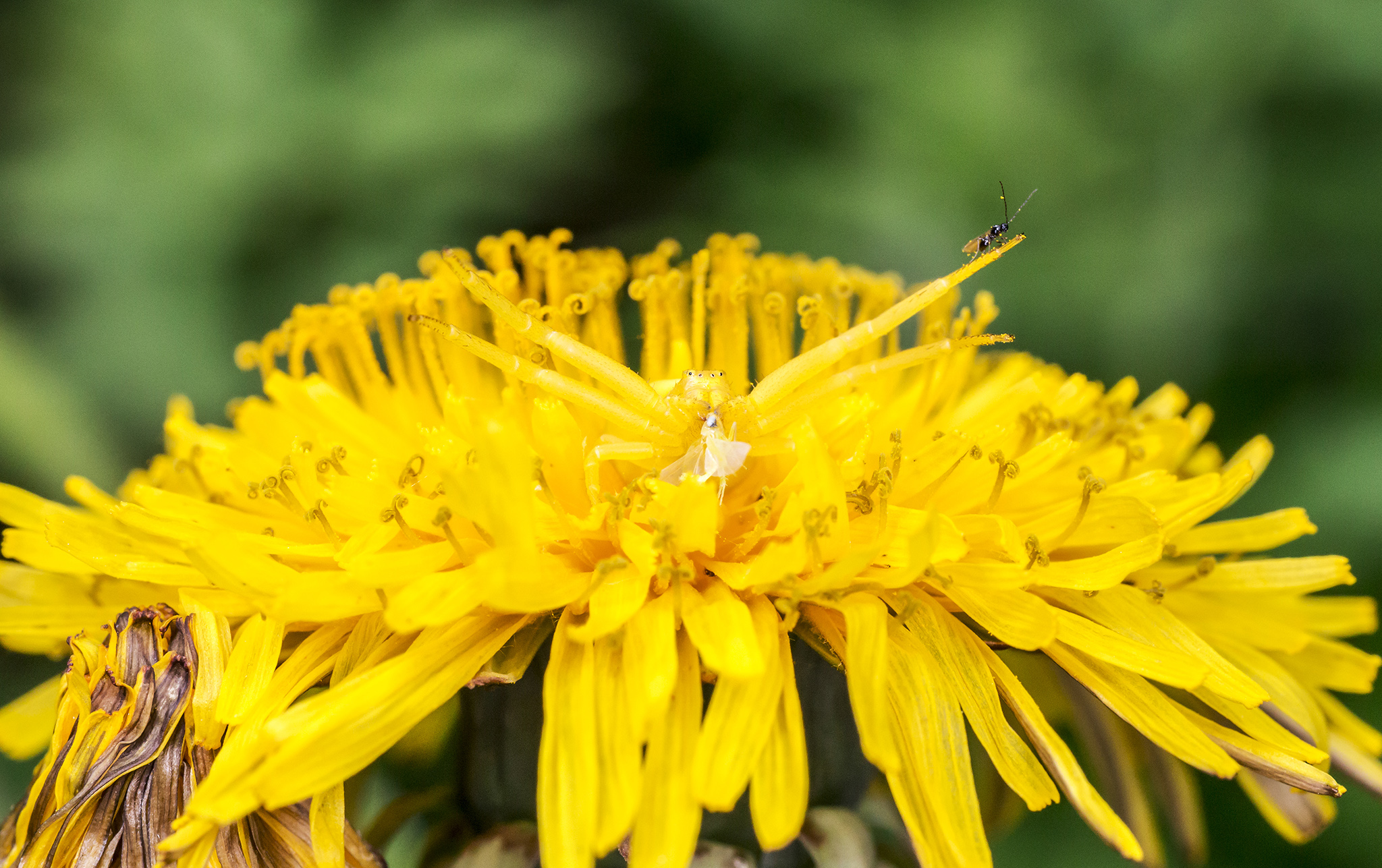🕷️ Deep Overview: Goldenrod Crab Spider (Misumena vatia)
The Goldenrod crab spider (Misumena vatia) is one of the most remarkable ambush predators among spiders. With its incredible color-changing ability and a crab-like posture, it’s a master of camouflage and deception, often seen lurking in flowers where it awaits unsuspecting prey. Despite its small size, it can take down insects much larger than itself.
🧬 Taxonomy
- Kingdom: Animalia
- Phylum: Arthropoda
- Class: Arachnida
- Order: Araneae
- Family: Thomisidae (Crab Spiders)
- Genus: Misumena
- Species: M. vatia
🌈 Physical Characteristics
- Size:
- Females: 7–11 mm
- Males: 3–5 mm (significantly smaller)
- Coloration:
- Females can be white or yellow, and can change color depending on the flower they sit on (takes a few days)
- Males are always smaller, more slender, with a darker cephalothorax and legs
- Body Shape:
- Wide, flat body with laterally extended legs (like a crab)
- Eyes:
- 8 small eyes arranged in two curved rows
🐾 Behavior & Hunting Strategy
- Ambush Predator:
- Lies motionless on flowers (goldenrod, daisies, milkweed, etc.) waiting for pollinators
- Captures prey with a lightning-fast strike using front legs
- Diet:
- Primarily bees, flies, butterflies, and other pollinators
- Capable of killing insects larger than itself by injecting venom
- Web Use:
- Does not spin webs to catch prey
- Uses silk for egg sacs and anchoring itself to the flower
🌍 Habitat & Distribution
- Range:
- Widespread in North America and Europe
- Habitat:
- Flower-rich meadows, gardens, hedgerows, and forest edges
- Especially common in late summer when flowers bloom heavily
🔄 Life Cycle
- Mating:
- Males search for females in early summer
- After mating, the male dies soon after
- Egg-laying:
- Female creates a silken sac on a leaf and guards it fiercely
- Spiderlings:
- Hatch in late summer
- Disperse via ballooning (riding silk threads on the wind)
- Matures the following spring or summer
🌼 Color-Changing Ability
- Purpose: Camouflage on different colored flowers (white or yellow)
- Mechanism:
- Involves pigment redistribution in epidermal cells
- Change from white to yellow takes 2–3 days, yellow to white is faster
- Triggers:
- Visual cues from surroundings
- Not under conscious control, but likely influenced by hormonal signals
🧠 Interesting Facts
- Named “crab spider” because of its sideways scuttling movement and crab-like stance
- Females can remain on the same flower for days
- Has been observed feeding on butterflies several times its size
- Plays an important ecological role in controlling pollinator populations
- Despite being a predator, it is not harmful to humans—its venom is only effective on insects
🎯 Ecological Role
- Pollination Predator: Impacts pollinator behavior and distribution, which can indirectly affect plant pollination success
- Prey for: Birds, wasps, and larger spiders
- Contributes to the diversity of predator-prey interactions in flowering ecosystems
🔎 Field Identification Tips
- Look for:
- A bright white or yellow spider perched on daisy-like flowers or goldenrod
- Legs held out in a crab-like fashion
- Unmoving, even when approached—until prey comes within striking distance
Visited 583 times, 30 visit(s) today
Views: 866
Subscribe to the newsletter:
